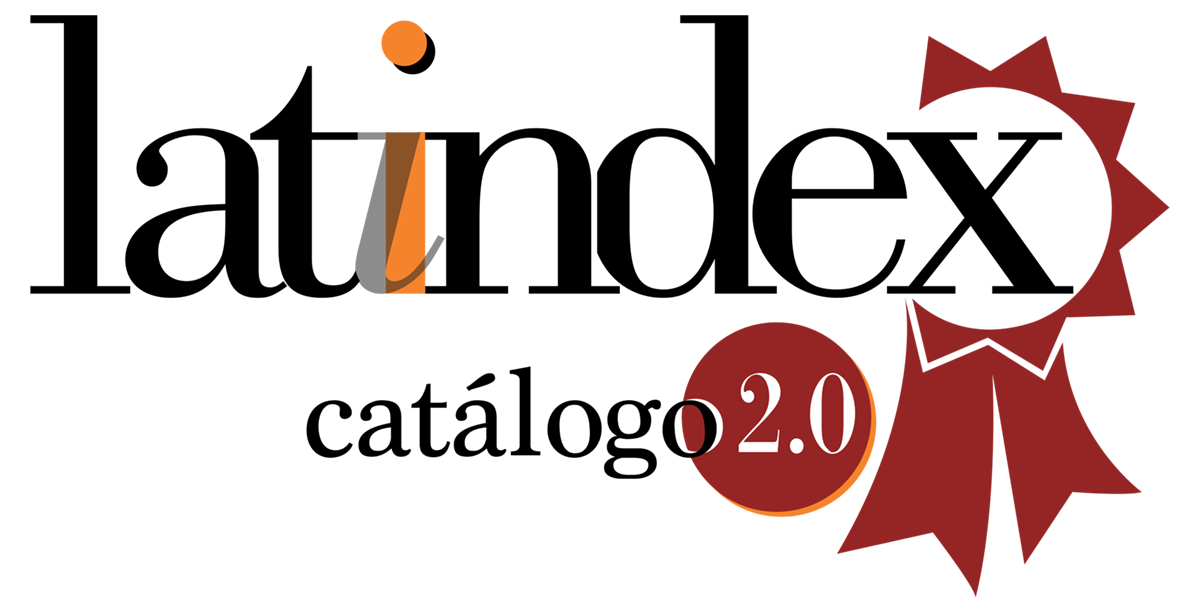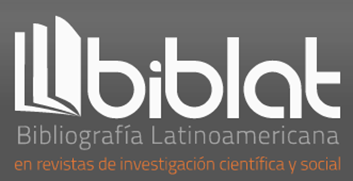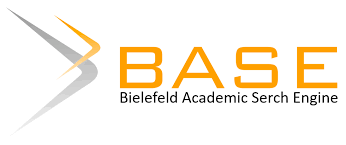Wildfires in Paraguay : implications for their prevention and management
DOI:
https://doi.org/10.47133/IEUNA2115Keywords:
disturbance, fire management, land use change, wildfireAbstract
Wildfires are ubiquitous and is one of the most common natural disturbances in the world, fire is best viewed as an ecological process that has influenced diversification and adaptation of many plants and terrestrial ecosystems. However, despite their eminently natural character, forest fires represent today one of the greatest threats due to their deleterious effect on natural and human ecosystems. In Paraguay there is lack of information in the origin and occurrence of wildfires; but the causes that determine the risk of wildfires in the country do not escape from the regional and global trends. The aim of this article is to address wildfires in Paraguay from a scientific, political, social and cultural point of view and it proposes a series of recommendations for management and fire prevention.
Downloads
References
Balch, J. K., Bradley, B. A., Abatzoglou, J. T., Nagy, R. C., Fusco, E. J. & Mahood, A. L. (2017). Human-started wildfires expand the fire niche across the United States. Proceedings of the National Academy of Sciences of the United States of America, 114(11), 2946–2951.
Benitez, F., Álvarez, C., Zárate, R., Duarte, P., Arias, A., Matozo, L., Ortiz, E., Paniagua, N., Duré, A., Galeano, C., Arévalos, F., Zárate, R., Cacciali, P., Cartes, J. L. & Cacciali, P. (2019). Informe de Incendios en el área del Pantanal Paraguayo 2019. Guyra Paraguay
Bowman, D. M. J. S., Balch, J., Artaxo, P., Bond, W. J., Cochrane, M. A., D’Antonio, C. M., DeFries, R., Johnston, F. H., Keeley, J. E., Krawchuk, M. A., Kull, C. A., Mack, M., Moritz, M. A., Pyne, S., Roos, C. I., Scott, A. C., Sodhi, N. S. & Swetnam, T. W. (2011). The human dimension of fire regimes on Earth. Journal of Biogeography, 38(12), 2223–2236
Bowman, D. M. J. S., Williamson, G. J., Abatzoglou, J. T., Kolden, C. A., Cochrane, M. A. & Smith, A. M. S. (2017). Human exposure and sensitivity to globally extreme wildfire events. Nature Ecology & Evolution, 1(3), 58. doi: 10.1038/s41559-016-0058
Campos, S., Cardozo Aguilera, N. R., Días de Vivar, G. & Páez, A. (2011). Metodología de valoración de daños por incendios forestales en el chaco. Asunción. Ministerio de obras públicas y comunicaciones (MOPC).
Castellnou, M. L., Alfaro, M., Miralles, D., Montoya, B., Ruiz, T., Artes, L., Besold, L., Brull, J., Ramirez, F., Botella, M. A., Martins, F., Bachsficher, M., Vendrell, J., Botella, M. A. & Purdy, S. (2019). Field journal: Bolivia learning to fight a new kind of fire. Analyzing and acting on extreme wildfires in Chaco (Bolivia) and Cerrado (Paraguay) ecosystems. Wildfire, 28, 26–34.
Castellnou, M., Prat-Guitart, N., Arilla, E., Larrañaga, A., Nebot, E., Castellarnau, X., Vendrell, J., Pallás, J., Herrera, J., Monturiol, M., Céspedes, J., Pagés, J., Gallardo, C. & Miralles, M. (2019). Empowering strategic decision-making for wildfire management: avoiding the fear trap and creating a resilient landscape. Fire Ecology, 15(1). 10.1186 / s42408-019-0048-6.
Certini, G. (2005). Effects of fire on properties of forest soils: A review. Oecologia, 143(1), 1–10.
Cochrane, M. A. & Barber, C. P. (2009). Climate change, human land use and future fires in the Amazon. Global Change Biology, 15, 601–612.
Collins, B. M., Everett, R. G. & Stephens, S. L. (2011). Impacts of fire exclusion and recent managed fire on forest structure in old growth Sierra Nevada mixed-conifer forests. Ecosphere, 2(4).
Congreso Nacional. (2017). Analizan modificaciones a la Ley 4014 “De prevención y control de incendios". Not icias Comisiones. http://www.senado.gov.py/index.php/noticias/noticias-comisiones/75-analizan-modificaciones-a-la-ley-4014-de-prevencion-y-control-de-incendios
Devisscher, T. (2015). Wildfire under a changing climate in the Bolivian Chiquitania: a social-ecological systems analysis. School of Geography and the Environment. Thesis, 1–324.
Devisscher, T., Anderson, L. O., Aragão, L. E. O. C., Galván, L. & Malhi, Y. (2016). Increased wildfire risk driven by climate and development interactions in the Bolivian Chiquitania, Southern Amazonia. PLoS ONE, 11(9), 1–29.
Dirección de Meteorología e Hidrología. (2021). Focos de calor y riesgo de fuego. Asunción. DINAC. https://focoscalor.meteorologia.gov.py.
Doerr, S. H. & Santín, C. (2016). Global trends in wildfire and its impacts: perceptions versus realities in a changing world. Philosophical Transactions of the Royal Society of London. Series B, Biological Sciences, 371(1696), 281–329.
Escobar, H. (2019). There’s no doubt that Brazil’s fires are linked to deforestation, scientists say. https://doi.org/doi:10.1126/science.aaz2689
Florentín, P. Á. (2020). Análisis de la ocurrencia de incendios forestales y su relación con el fenómeno climático de El Niño – Oscilación Sur (ENOS) en el Paraguay 2001-2019. Universidad Católica Nuestra Señora del Asunción.
Flores, B. M. & Holmgren, M. (2021). White-Sand Savannas Expand at the Core of the Amazon After Forest Wildfires. Ecosystems. https://doi.org/https://doi.org/10.1007/s10021-021-00607-x
Gobierno Nacional del Paraguay. (2019). Reporte Especial de focos de calor sobre el departamento de Alto Paraguay. Instituto Forestal Nacional. Informe de Focos de Calor. http://infona.gov.py/application/files/5515/6942/9068/monitoreo_focos_conjunto_20190925.pdf
Hutto, R. L., Keane, R. E., Sherriff, R. L., Rota, C. T., Eby, L. A. & Saab, V. A. (2016). Toward a more ecologically informed view of severe forest fires. Ecosphere, 7(2), 1–13.
Jensen, S. E. & McPherson, G. R. (2008). Living with Fire : Fire Ecology and Policy for the Twenty-First Century. Berkeley, CA, USA. University of California Press.
Jolly, W. M., Cochrane, M. A., Freeborn, P. H., Holden, Z. A., Brown, T. J., Williamson, G. J. & Bowman, D. M. J. S. (2015). Climate-induced variations in global wildfirdanger from 1979 to 2013. Nature Communications, 6, 7537.
Julio-Alvear, G. (2004). Proceedings of the Second International Symposium on Fire Economics, Planning, and Policy: A Global View. In Managing efforts to prevent forest fires in South America. General technical report PSW-GTR-208.
Kalies, E. L. & Yocom Kent, L. L. (2016). Tamm Review: Are fuel treatments effective at achieving ecological and social objectives? A systematic review. Forest Ecology and Management, 375, 84–95.
Keeley, J. E., Bond, W. J., Bradstock, R. A., Pausas, J. G. & Rundel, P. W. (2012). Fire in Mediterranean ecosystems: ecology, evolution and management. Cambridge. Cambridge University Press.
Kunst, C., Ledesma, R., Bravo, S., Albanesi, A., Anriquez, A., Silberman, J., Defossé, G. E. & Casillo, J. (2015). Fire history, fire ecology and management in the Argentine chaco. In B. Leblon & M. Alexander (Eds.), Current International Perspectives on Wildland Fires, Mankind and the Environment (pp. 1–35). Nova Sciences.
Leverkus, A. B., García Murillo, P., Jurado, V. & Pausas, J. G. (2019). Wildfires : Opportunity for restoration? Science, 363(6423), 134 –135.
Liu, Y., Stanturf, J. A. & Goodrick, S. (2010). Trends in global wildfire potential in a changing climate. Forest Ecology and Management, 259(4), 685–697.
Mccaffrey, S. (1994). What Does Wildfire Risk Mean to the Public ? In S. Mccaffrey, The public and wildland fire management: social science findings for managers. (pp. 33–45). Newtown Square. Department of Agriculture, Forest Service, Northern Research Station.
Mistry, J., Schmidt, I. B., Eloy, L. & Bilbao, B. (2019). New perspectives in fire management in South American savannas: The importance of intercultural governance. Ambio, 48(2), 172–179.
Myers, R. L. (2006). Living with Fire - Sustaining Ecosystems & Livelihoods through Integrated Fire Management. Global Fire Initiative. In The Nature Conservancy. Tallahassee, FL.
Pausas, J. G. & Keeley, J. E. (2019). Wildfires as an ecosystem service. Frontiers in Ecology and the Environment, 17(5), 289–295
Pausas, J. G. (2004). Changes in Fire and Climate in the Eastern Iberian Peninsula (Mediterranean Basin). Climatic Change, 63(3), 337–350.
Pérez, S. E. R. D., Pinazo, J., Fatecha, H. H. & Amarilla, S. M. (2005). Caracterización de incendios a través de imágenes satelitales de mediana y alta resolución en la Reserva de Recurso manejados San Rafael y su zona de amortiguamiento, región oriental, Paraguay. Investigación Agraria, 7(2), 65-70
Pivello, V. R. (2011). The use of fire in the cerrado and Amazonian rainforests of Brazil: past and present. Fire Ecology, 7(1), 24-39.
Rejalaga, L., Campos, S., Cardozo, N. & Fracchia, F. (2010). Plan de manejo del fuego - Región Occidental. Asunción, Paraguay. Ministerio de obras públicas y comunicaciones (MOPC).
Rodríguez, I., Sletto, B., Bilbao, B., Leal, A. & Sletto, B. (2013). “Opening up” fire conflicts: Reflexive governance and transformative knowledge networks in culturally fragile indigenous landscapes STEPS Working Paper 54, Brighton. STEPS Centre.
Romang, H. E., Bischof, N. & Rheinberger, C. M. (2009). The risk concept and it application in natural hazard risk management in Switzerland. Natural Hazards and Earth System Sciences, 9, 801-813
Ryan, K. C., Knapp, E. E. & Varner, J. M. (2013). Prescribed fire in North American forests and woodlands: History, current practice, and challenges. Frontiers in Ecology and the Environment, 11(S1), e15-e24
Shlisky, A., Meyer, R., Waugh, J. & Blankenship, K. (2008). Fire, Nature, and Humans: Global Challenges For Conservation. The Nature Conservancy, 68, 36-42
Smith, A. M. S., Kolden, C. A., Paveglio, T. B., Cochrane, M. A., Bowman, D. M. J. S., Moritz, M. A., Kliskey, A. D., Alessa, L. Hudak, A. T., Hoffman, C. M., Lutz, J. A., Queen, L. P., Goetz, S. J., Higuera, P. E., Boscheti, L., Flannigan, M., Yedinak, K. M., Watts, A. C., Strand, E. K…Abatzoglou, J. T. (2016). The Science of Firescapes: achieving fire-resilient communities. BioScience, 66(2), 130-146.https://doi.org/10.1093/biosci/biv182
Stephens, S. L., Burrows, N., Buyantuyev, A., Gray, R. W., Keane, R. E., Kubian, R., Liu, S., Seijo, F., Shu, L., Tolhurst, K. G. & Wagtendonk, J. W. van. (2014). Temperate and boreal forest mega-fires: Characteristics and challenges. Frontiers in Ecology and the Environment, 12(2), 115–122
Tedim, F., Leone, V., Amraoui, M., Bouillon, C., Coughlan, M. R., Delogu, G. M., Fernandes, P. M., Ferreira, C., McCaffrey, S., McGee, T. K., Parente, J, Paton, D., Pereira, M. G., Ribeiro, L. M., Viegas, D. X. & Xanthopoulos, G. (2018). Defining Extreme Wildfire Events : Difficulties, Challenges, and Impacts. Fire, 1(1). https://doi.org/10.3390/fire1010009
Thompson, M. P., Zimmerman, T., Mindar, D. & Taber, M. (2016). Risk terminology primer: basic principles and a glossary for the wildland fire management community. USDA Forest Service - General Technical Report RMRS-GTR, 2016(349).
Ubeda, X. & Sarricolea, P. (2016). Wildfires in Chile: A review. Global and Planetary Change, 146(October), 152–161.
WWF. (2019). Las consecuencias que dejaron los incendios forestales en áreas protegidas de Paraguay. Noticias Nacionales. https://www.wwf.org.py/?354190
Zimmermann, L. N. L., Eisenkölbl Closs, A. R. & Amarilla Rodríguez, S. M. (2021). Dinámica de incendios forestales en la Reserva para Parque Nacional San Rafael, Paraguay, periodo 2007-2017. Revista Sociedad Científica Paraguaya, 26(1), 17–34.


















